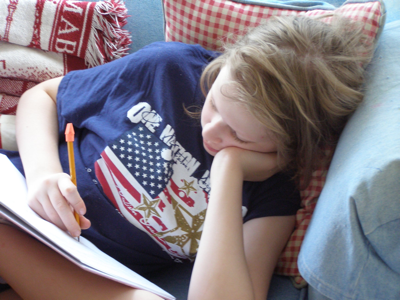
She wanted to shop at a fashion store in an upscale shopping center. She had a 40% off coupon in hand, and was ready to find some bargains.
Our children earn the money they use for these kinds of things doing service opportunities. I handed her the percentage of the money that we had saved from her earnings plus what we supplemented for clothing. She had $40 to spend, which is not much at a teen fashions shop.
Our eldest daughter has begun to question whether she would ever use math “in real life”. Now we had a practical application for her fraction and percentage lessons. I casually asked her how many dollars worth of clothing she could plan to purchase with her $40 and the 40% off coupon.
She thought about it for a moment and said “about $55 worth”. Not bad. Now, what about the tax? In our county sales tax is 6%. She had trouble with that one. I explained to her that this was a “real life” application of her math lessons. Wouldn’t it be embarrassing, for example, to select $55 of clothes and not have the money to pay for them at the cashier? Using math, we can avoid this embarrassing mistake.
As we rode on to the clothing store, we calculated the actual dollar value she could safely bring to the cashier. We considered the $40 budget, the 40% off coupon, and the 6% sales tax. Final tally: pick clothes whose combined value does not exceed $50 (we allotted for a small margin of error, something her father learned many years ago).
Next time any of the children asks about “real life” application of school lessons, we can point to the shopping trip as a practical use of things we learn in school.
For an explanation of our system of Service Opportunities, see Chores or Service Opportunities? on Habits for a Happy Home.
Leave a Reply